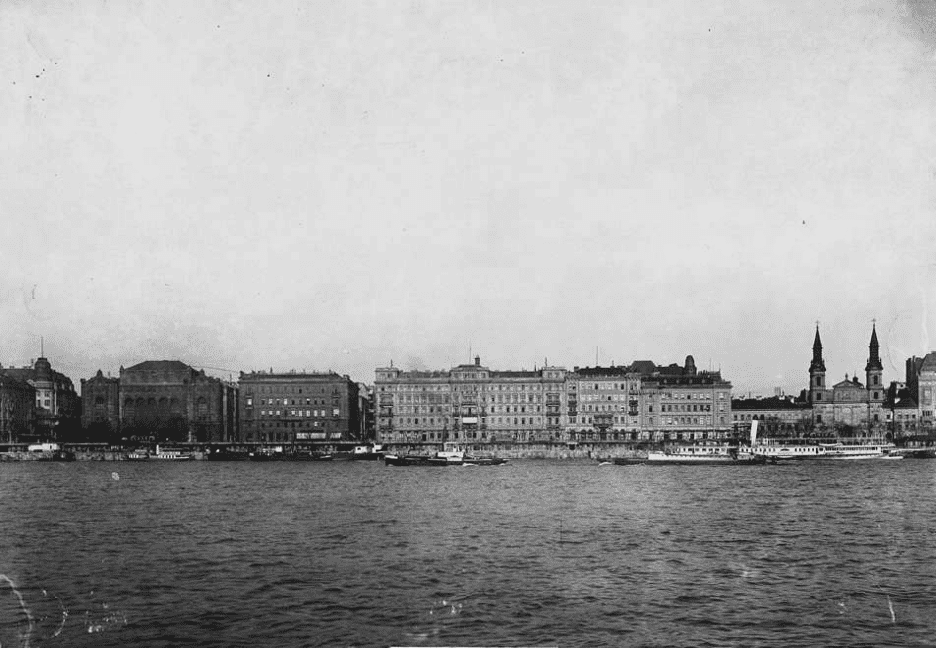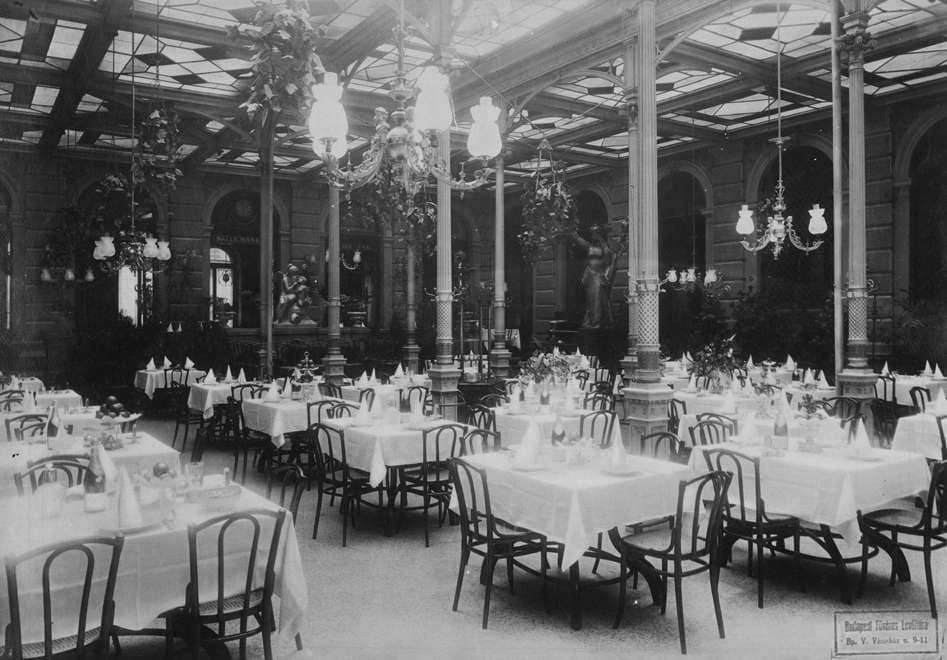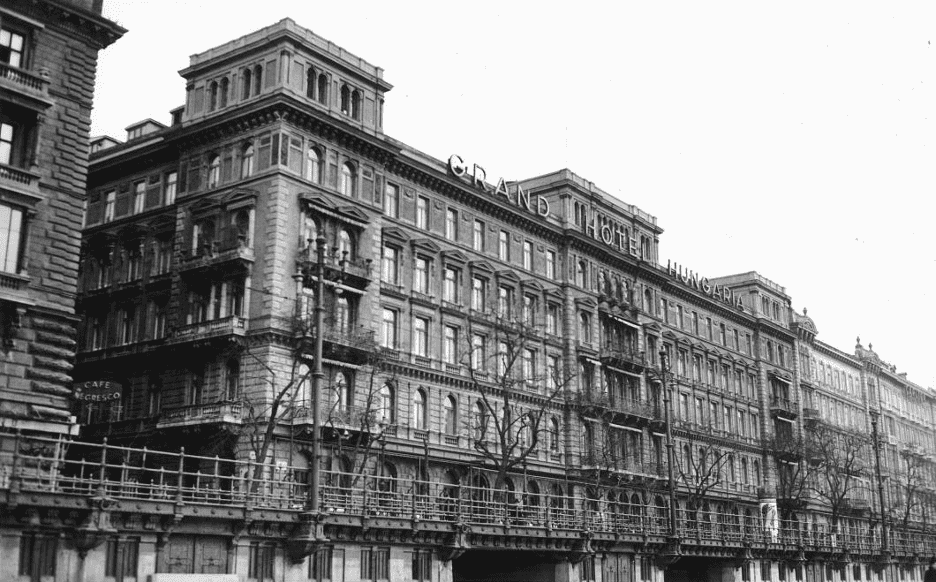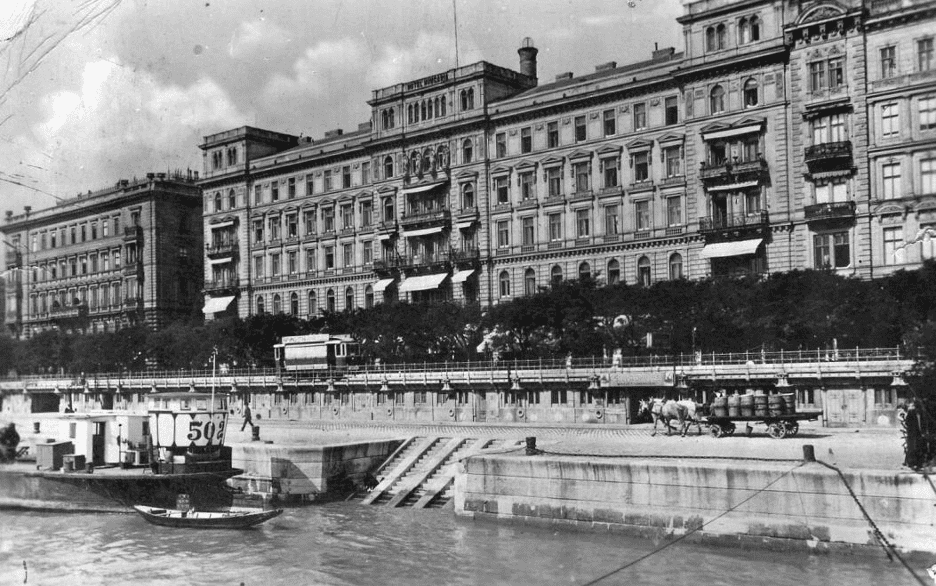The Grand Hotel Hungaria (Hungária Nagyszálló) designed in Neo-Renaissance style opened its doors in 1871. The nearly 300-room edifice was Budapest’s first five-storey building, as well as its first luxury hotel in the modern sense, which had an elevator and a telegraph, but a luxury restaurant, a ticket office of the Hungarian Railways (MÁV) and a bank branch also operated in it.
In the second half of the 1800s, the lower embankment in Pest (Alsó-Dunasor at the time) was expanded, thus the opportunity was given to start the on-demand construction of a row of hotels alongside the Danube. The idea came from Count Ödön Széchenyi, Hungarian-born Imperial Ottoman pasha and president of the Hungarian National Fire Brigade Association, as he had proposed the creation of the First Hungarian Hotel Public Limited Company in 1868, which set itself the objective of constructing a ‘hotel’ in an age-appropriate manner that would be competitive even at European level. In the year of the company’s foundation, the works started according to the design of Hungarian architects Antal Szkalnitzky and Henrik Koch.
In the immediate vicinity of the Grand Hotel Hungaria, luxury hotels such as the Carlton, the Bristol, or the Ritz were built one after the other, which turned the Pest-side embankment into a truly high-class, admirable and iconic part of the capital. The Grand Hotel Hungaria instantly became popular with aristocrats, inventors and actors, and it hosted many prestigious events, too: for example, the famous Golgotha of Mihály Munkácsy, the Painter-Prince, was also presented to the public here.


The untroubled operation of the hotel lasted until the establishment of the Hungarian Soviet Republic, because during its existence from 21 March until 1 August 1919, the highly cherished hotel was expropriated by the government and functioned as a temporary residence for commissars and high-ranking government officials. The tragic fate of the hotel was finally sealed in World War II—the bombings did not spare the building and caused irreversible damage; its restoration was not even attempted.

Click here to read the original article








